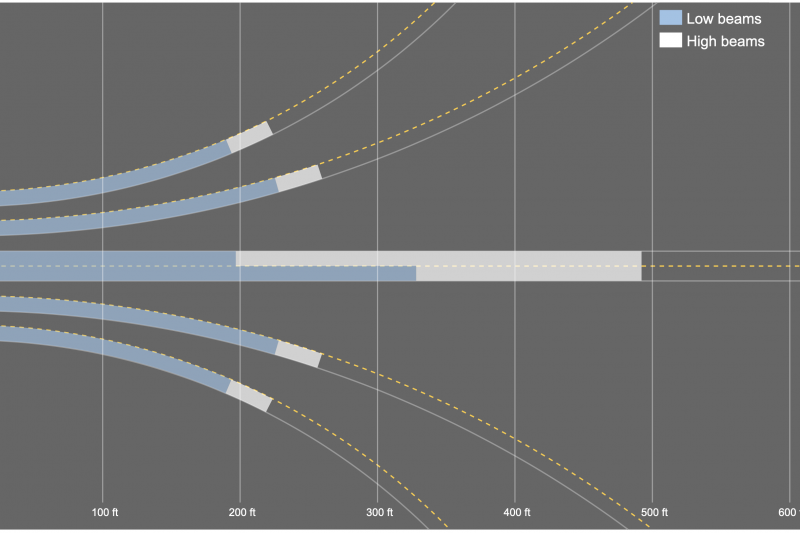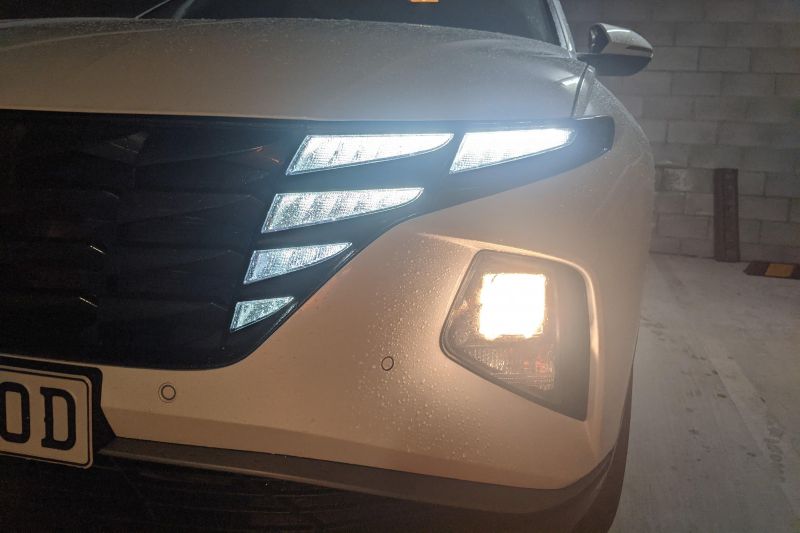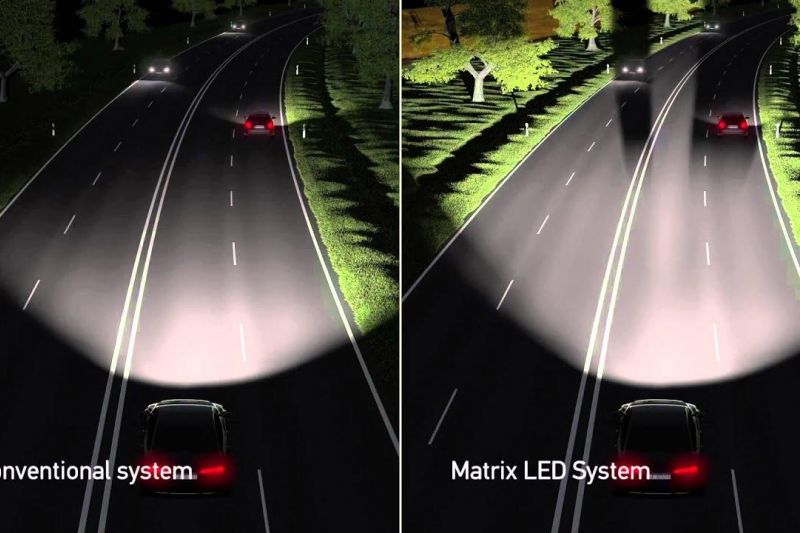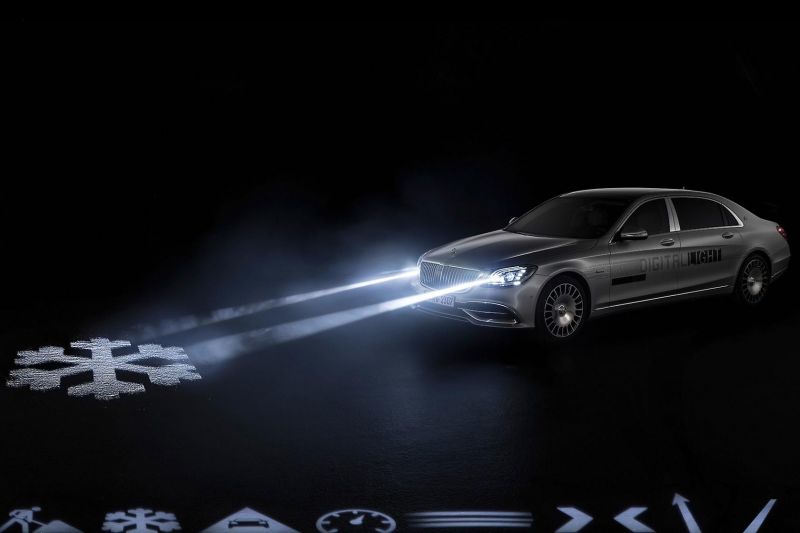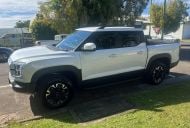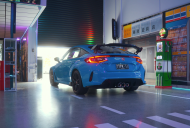The Australasian New Car Assessment Program (ANCAP) has expanded its testing regimen over the years, moving from a purely crash safety-focused testing protocol to include the testing of systems designed to help you avoid a crash.
Autonomous emergency braking and lane support systems can be invaluable technology in helping you from getting into a fatal accident. But do you know what else can help you avoid an accident? Decent headlights.
That’s especially true for the vast number of Australians who live in regional areas, where the lack of light pollution helps you see the starry sky but the lack of street lights has you relying solely on your headlights at night.
As Vivek Shah mentioned in his piece comparing ANCAP with overseas safety authorities, the Insurance Institute for Highway Safety (IIHS) in the US does extensive evaluation of headlights.
It first started testing headlight performance in 2016. Initially, it didn’t affect whether the car ended up earning the coveted Top Safety Pick or Top Safety Pick+ appellations, but the IIHS has increased its standards successively since then.
Now, to earn a Top Safety Pick+ title, every variant in a vehicle’s model range must offer good or acceptable headlights; if even one variant has poor headlights, that’ll only get them as high as a Top Safety Pick.
IIHS personnel measure the reach of a vehicle’s headlights both on a straight and on curves, using sensors on the track to measure how far the beam extends at speeds of 64-80km/h with an intensity of at least five lux.
Lux is a unit that means the amount of light that hits (or passes through) a surface; for reference, the IIHS says a full moon on a cloudless light will illuminate the ground below to about one lux.
The IIHS tests both low beams and high beams on five different approaches, and the testers don’t adjust the level of the lights – after all, they reason few vehicle owners would actually do this. Readings are taken 25.4cm from the ground for visibility and 109.2cm from the ground for glare.
The safety authority says, based on a 2021 analysis of police-reported crashes, headlights with a good rating have 19 per cent fewer night-time, single-vehicle crashes than vehicles with poor-rated headlights.
This testing is extremely worthwhile. At CarExpert we’ve decried halogen headlights, and we put our money where our collective mouths are to demonstrate which lighting systems are superior by comparing four cars: one equipped with halogens, another with LEDs, and one each with matrix LED and laser headlights.
The result? Our testing methodology found there was a 95 per cent increase in the amount of light hitting our lux meter when moving from a Kia Seltos with halogen lights to a Suzuki Swift with LEDs. That jumped to 280 per cent when we switched to high-beam.
MORE: Halogen v LED v matrix LED v laser: Headlights compared and tested
The matrix LED-equipped Skoda Superb was even more impressive – its high beam was 470 per cent brighter than the halogen high beam of the Seltos. I know which one I’d rather take for a drive on a dark country road.
LED headlights have largely replaced previous up-level lighting options like HID (high-intensity discharge) or bi-xenon headlights, but there remains a glut of vehicles that still use halogens. That’s despite LED daytime running lights having become almost universally adopted across the new car market.
Even from a purely aesthetic standpoint, halogen headlights are passé. Warm, yellowish lighting still has its place – it can flatter you when it’s used near a dressing room mirror. But on cars, halogens are so last century. Let’s not forget how goofy it looks, too, to marry halogen headlights with LED daytime running lights.
Case in point: the futuristic-looking Hyundai Tucson in base and Elite guises, where the intriguing grille-mounted LEDs clash with the dated-looking halogens. The glitzy Palisade also lacks LED headlights in its base trim, despite every Santa Fe now coming standard with the technology.
Other brands are strangely inconsistent, too. Every Mitsubishi ASX has LED headlights, but on the pricier Eclipse Cross they’re exclusive to higher-end models. You have to step up to a Nissan X-Trail to get LEDs even though every Juke model has them standard, while the only Kia Cerato with LEDs is the top-spec GT.
The good news is this is changing, slowly but surely, as fewer new cars are introduced with halogens. Some lower-end models, refreshingly, don’t offer halogens on any variant – see the Toyota Corolla, for instance, or the redesigned Renault Captur or Haval H6.
In recent times, we’ve seen some amazing innovations in the lighting space. Matrix LED headlights, for example, can block out individual LEDs within a bank or ‘matrix’. That means you can have a high beam operating all the time and variably adjusting its intensity when an object enters or approaches the beam, helping you to avoid dazzling other drivers.
Debuted by Audi on the 2013 A8, the technology has filtered down throughout other Volkswagen Group brands and models, while other brands have also introduced the tech under different names.
Other lighting innovations include lights that move as you turn the steering wheel, as seen on the likes of the Subaru Forester. Technically that’s not a recent innovation, as the Citroen DS introduced that back in 1967. However, today’s steering-guided headlights are now computer-controlled, and yet this option hasn’t become widespread.
Then there’s technology like Mercedes-Benz’s Digital Light, which can project images like warning signs and guidelines on the road ahead, or BMW’s Laserlight that fires lasers through mirrors and an element filled with yellow phosphorus to help you see further ahead.
All these innovations just go to show how archaic halogen headlights are in 2021, and how much variation there can be between different headlights.
There are arguably three things that can drive a car brand in Australia to add safety equipment. There’s pressure from consumers, however consumers may not be aware of the value of a piece of safety equipment. There’s government regulation, such as an Australian Design Rule (ADR) mandating the item.
But the third is pressure from ANCAP which, though it has no regulatory authority, can help spur a car brand to make a change by giving it a poor rating.
Even if every halogen headlight-equipped vehicle sold today received LEDs tomorrow, there’s still a place for headlight testing by ANCAP. Not all headlights are created equal, and it’s worthwhile determining which headlights on the market do a better job at helping us see (and avoid) the potential accident waiting for us on a dark rural road.


